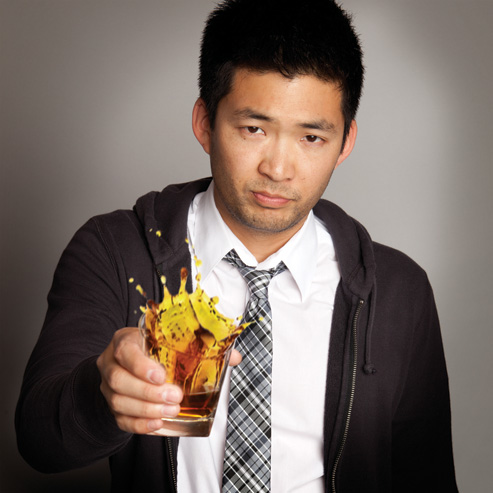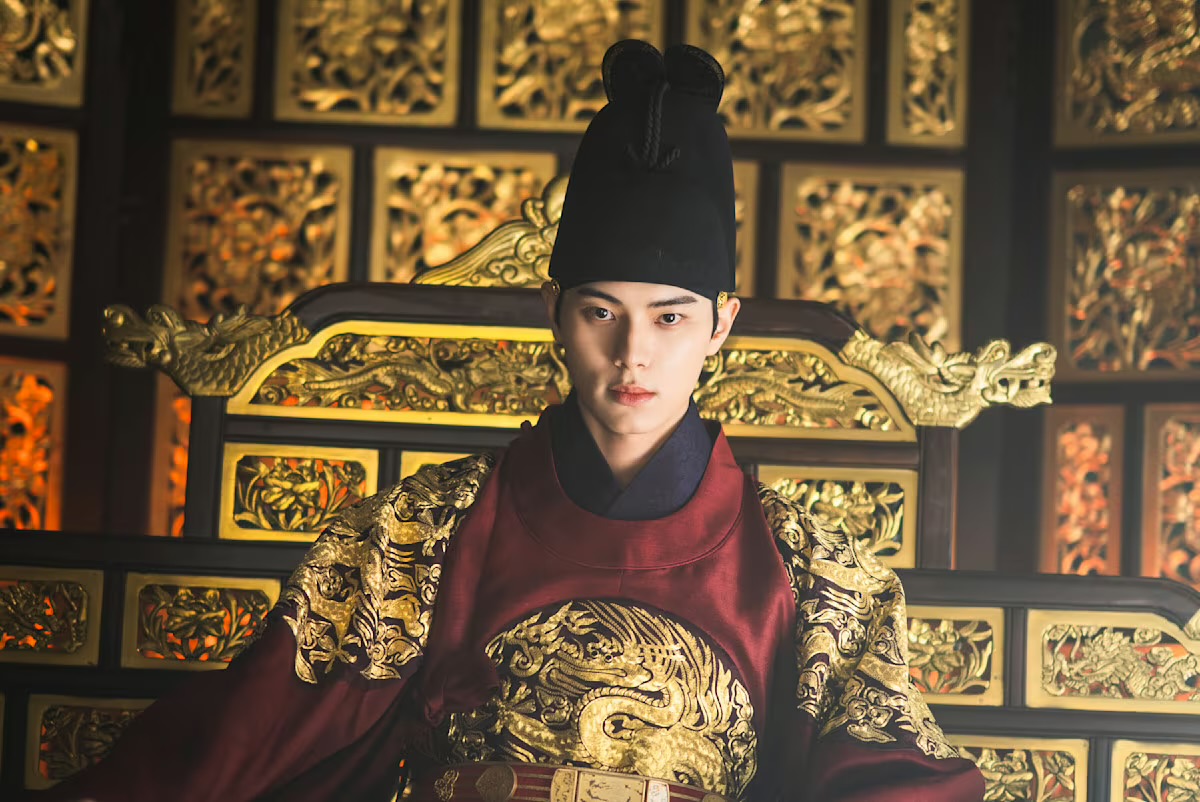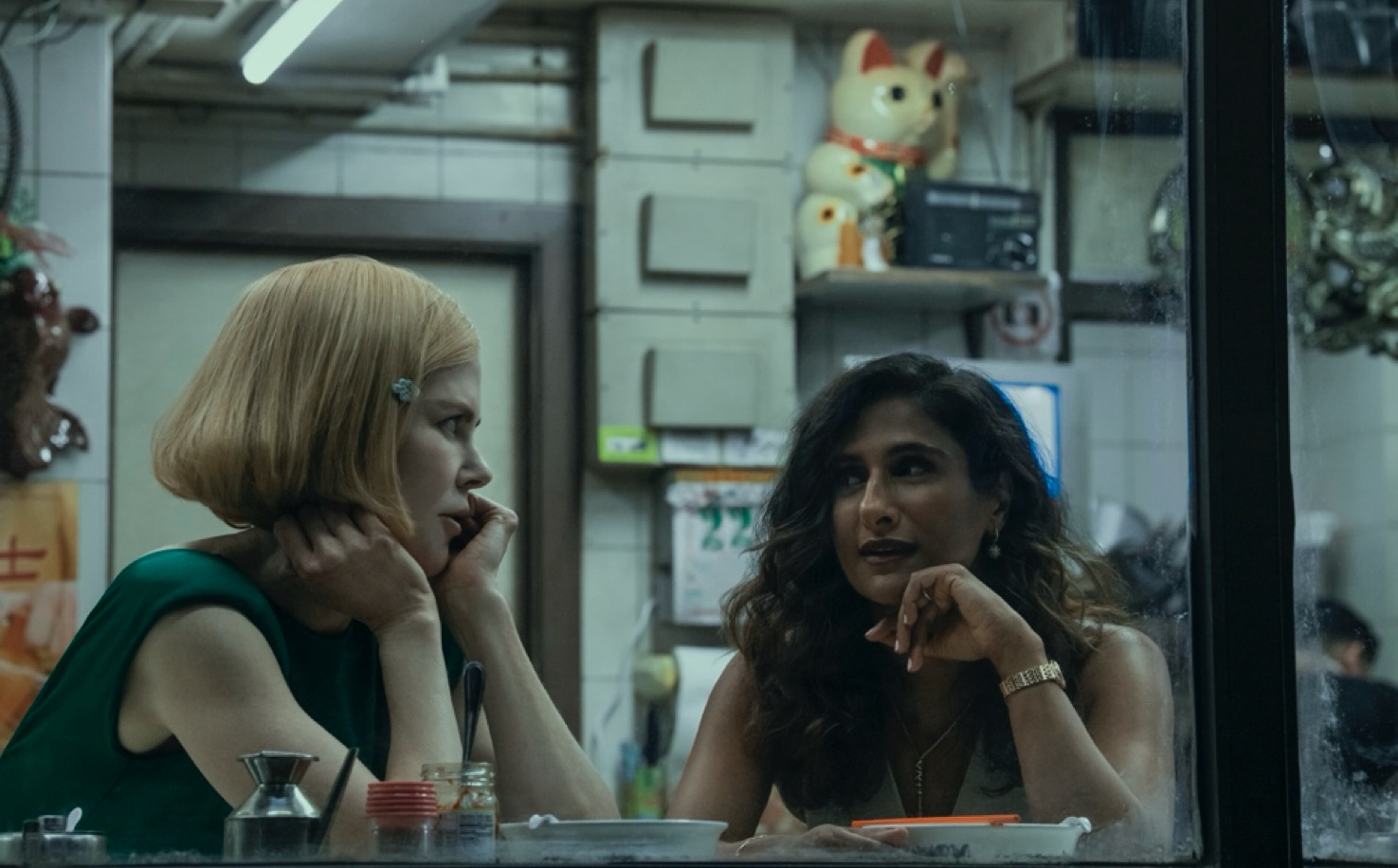EDITOR’S NOTE: This interview was published in the November 2010 issue of KoreAm. Last week, Angry Asian Man creator Phil Yu wrote to his readers, asking them to help keep the site going through a donation. If you believe his blog is important and empowering (we do!), help him pay the bills.
—
It all started, as most blogs do, as a personal site to vent about issues. Now, almost ten years later, Angry Asian Man—through its frequent and culturally relevant posts—draws tens of thousands of readers each day.
How Phil Yu, Asian America’s most influential blogger, got there.
by JEFF YANG
The blog known as Angry Asian Man is the whirling core of the networked Asian American community, the hyperconnected hub where tens of thousands of people dock each day—sometimes hourly—to find out what’s happening in the cultural, media and political landscape of the nation’s most dynamic emerging population.
Behind it is just one unassuming 32-year-old Korean Angeleno, Phil Yu, whose dedication over the past 10 years has turned what was once just a journal of personal musings into Asian America’s most bookmarked blog. The site, though it doesn’t allow for comments, links readers to virtually everything Asian and Asian American, from news (including weird news) and politics, to sports and entertainment, and is sprinkled with original content, including his ambitious “30 Most Influential Asian Americans Under 30” list, which ran last year.
But one of the things that’s created Angry Asian Man’s mystique is the degree to which Phil himself stays out of the limelight, rarely revealing anything personal. In fact, for the first three years he ran the site, he even attempted to blog anonymously. Which is why I’m honored that Phil, last month, was willing to give me the following Q&A—his most candid interview ever. A cultural critic who knows he’s part of a generation that doesn’t just welcome swift, relevant commentary—it depends on it—Phil has created what is now the most influential (some would say, essential) website in Asian America.
Isn’t it time you got to know him?
JEFF: Hey Phil, thanks for agreeing to talk to me. I know there’s a lot of stuff you’ve kept private over the years—it’s always been like Angry Asian Man is a superhero and Phil Yu is the secret identity. But here’s your chance to finally come clean.
PHIL: It’s not like I intended this to be the big story where I unload all of my intimate secrets, but it is what it is. Ah, let’s just go with it and see what happens.
Well, let’s start at the beginning. When and where were you born?
I was born in 1978 and grew up in Silicon Valley, in Sunnyvale, [Calif.], where there wasn’t exactly a shortage of Asians.
Were you born in Sunnyvale?
No, I was born in Philadelphia! But I was only a couple of months old when we moved out to California.
That’s not why your parents named you Phil, is it?
Actually, it is.
Wait, I was totally joking!
I’m completely serious. My name is Philip, but my parents chose the name because I was born in Philadelphia.
That’s such an Asian parent thing to do. What did your mom and dad do for a living?
My mom has been a nurse for 30 years. And my dad did a lot of things, but what he did for the bulk of my childhood was run a video store.
Did your dad’s store stock Asian movies? Is that where you first got exposed to images of Asians on screen?
Actually, no. I have two distinct memories of first seeing Asians in movies and on television. The first was during high school, when one of the local TV stations had a Bruce Lee marathon—a new film each night. And I still remember staying up every night watching those movies, thinking, “Holy crap, who is this guy?” And the next day, I’d just be grabbing my friends and saying, “Oh man, did you see that movie last night? It was cool. It was so cool.” It wasn’t until much later that I learned that in my favorite film from that series, Game of Death, for most of the scenes, it wasn’t even Bruce Lee. It was this Korean actor they hired to take over after Bruce died.
Because all Asians look alike, right?
These are the lessons you end up learning.
The other memory I have was from my favorite sitcom of all time, Diff’rent Strokes. I’d watch it obsessively. And one day it was on, and the plot was about how Phil Drummond, the dad, was a Korean War vet, and out of the blue he gets a call from his old girlfriend during the war, who tells him that he has an illegitimate son. Then he goes to open this door, and there’s a Korean guy there, and he goes “Hello, Phil Drummond, I am your son!” I was really young at the time, so this was a huge deal to me, to have a show that I worshiped acknowledging that Korean people exist, and to see Korean faces on television. Of course, thinking about it now, the implications of the episode were pretty problematic.
Well, it’s about kids fathered and abandoned by American G.I.s during wartime, but, you know, played for laughs.
Not only that, I just looked up the actors on IMDB and the mom was played by Nobu McCarthy and the son was played by Keone Young. They weren’t even Korean! This interview is ruining my whole childhood.
These are the lessons you end up learning.
Back then, I was just an innocent, typical American kid in love with pop culture. I was just taking everything in, movies, TV, and barely even digesting it. What killed me back then was that I didn’t have a place to talk about all that stuff. No one around me was interested the way I was.
You were waiting for the web to come along.
I guess I was.
At least you were waiting in the right place…
To be honest, I’d heard the name Silicon Valley, but I didn’t realize at the time that I was right in the middle of it all! It wasn’t until I left for college that I realized, “Oh, man, where I live is kind of a big deal.” My high school, Homestead High in Cupertino—it’s where Steve Jobs and Steve Wozniak went to school. That’s the big thing everyone always brags about.
And yet you didn’t even think about any of this until you graduated?<
You don’t think about stuff when it’s right there in front of you. So, it didn’t dawn on me that I was living in this crazy technology center, and I didn’t wonder about how it was that I was always surrounded by Asians. But when I arrived at college at Northwestern University [in Evanston, Ill.], I’d dropped into a totally different world. Northwestern was a pretty white school back then. I never considered myself the kind of person who only hung out with other Asian people, but the quickest way to make friends is to find people you have an affinity with—and that turned out to be other Asian kids. We just had this common bond over things we didn’t have to explain. Food, for sure. When my parents sent me a fat box of ramen, guess who came a knockin’. And as soon as anyone had a car, we were like, “Oh man, wanna go get some Korean food?” Bang, 10 of us would pile into a car to go get sundubu. It was the bond that comes from people mutually craving rice and kimchi. And afterwards, off to the noraebang.
Ha, yeah, I heard from a mutual friend of ours that you’re killer at karaoke. But did you do stuff in college other than eat?
Sort of. I was a film major. I liked being in class having discussions and writing papers about film, but I didn’t know if any career could come out of that. But in the meantime, I was enjoying it.
Did you get exposed to Asian or Asian American film in your classes?
That’s actually the most important part of this story. I was one of just a few Asian Americans in the film program. It was an isolating feeling, and there wasn’t a lot in the classes that spoke to my experience. But the year before I got to Northwestern, the students had gone on a hunger strike to protest the lack of Asian American studies. It lasted 23 days, until finally, the administration gave in. The program started in 1999, and I was one of the first students to enroll in an Asian American studies class. [If it hadn’t been for that program], Angry Asian Man would not exist.
What did you do after you graduated?
I had zero job prospects. But the film program made us learn basic HTML, so I had web experience, and I thought, maybe that’s something I could do: find a job doing something with the internet. I mean, I was from Silicon Valley!
By the time I was graduating, though, [the dot-com boom] was starting to collapse. I ended up in temp hell, filing invoices in this stockroom full of tall cabinets for a technology-testing lab. And because I had all this time alone with my thoughts, I decided I needed somewhere to put them. So in 2001, I set up a personal website on a free hosting service. I didn’t think anyone would read it other than my friends. I had a section where I could just vent my feelings about Asian American issues, and I called it “Angry Asian Man.” The thing is, people who know me know I’m not really that angry! The whole Angry persona is just a way of pushing back on the idea that Asians are the ones who always sit there and take it.
And so Angry Asian Man was born.
That was what I consider the beginning. It was all based on stuff I’d encountered in college. Like Lela Lee and her comic strip, Angry Little Asian Girl. And Giant Robot, which blew my mind. And then there was this spoken word troupe, I Was Born With Two Tongues; they had this piece called Why Are You So Angry? It was all about how when Asians are angry, people think it’s off-kilter and scary. Like, what do Asians have to complain about? And the Two Tongues was saying, we have plenty of reasons to get angry. The audience all walked away from the performance with completely different reactions. But I was like, “HELL, YES!”
Then this incident occurred where one of the fraternities beat a group of Asian players in an intramural softball game. One of the frat brothers wrote this email about how they’d beat the “yellow people from the East” and “sent them back to their rice paddies.” And someone printed it out and taped it to their dorm wall. The campus newspaper reported on it and put it on page four. Why wasn’t it on the front page? Back then, my friends and I were always joking about how this and that thing was racist—even things that clearly were not. Like if a waiter asked if we wanted rice or potatoes, afterward we’d be like, “That’s racist. That’s totally racist.”
But after that incident, I thought to myself, “You know, that was racist. And other Asians aren’t even getting mad.” It made me realize that when you speak out, people try to squash you, even in your own community. So when I launched Angry Asian Man, that ended up being a focus for me: calling out things that I thought people should be paying attention to. And I used that term as a catchphrase—“That’s racist.”
When did you move Angry Asian Man to its own site?
After about a year, the blog started to get all this traffic from people I didn’t know. It was developing some kind of following.
And then in 2002, the Abercrombie & Fitch debacle happened. A&F had put out these shirts featuring stereotypical images of Asians and phrases like “Wong Brothers Laundry Service—Two Wongs Can Make It White!” I decided I could use my site to spread the word. I put pictures of the shirts up, because A&F had deleted the images from their own website. I posted corporate contact information. People started staging protests, and I got this huge spike in traffic.
Then I got an inquiry from someone at the San Francisco Chronicle, wanting to talk to the guy behind Angry Asian Man. But at the time, it was just a subdomain on my personal site, and I didn’t want tons of people reading the paper and then going through my private stuff. I realized that it had to have a life of its own. That Angry Asian Man had to have its own separate identity. So I created angryasianman.com, and things just snowballed.
And a few months from now, you’re going to be celebrating your 10th anniversary.
That’s true! February 2011. Wow, I can’t believe it’s been 10 years. That’s just crazy.
A lot’s happened in your life since then.
Yeah. I got my master’s in critical studies at USC. I work as a content producer for Yahoo! Movies. And I got married! I met my wife, Joanna, in college; we lived in the same dorm freshman year. We didn’t start dating until senior year, though.
One of those friendships that turn into a romance things?
You could say that.
And she’s cool with Angry Asian Man?
She’s been there the whole time, so she knew what she was getting. And I have to give her credit. Because Angry Asian Man is there when she wakes up, and before we go to sleep. The first thing I do when I drag my ass out of bed is get online, check my inbox and write posts. When I come home from work, I write a bunch more to post the following morning. I still stay up pretty late doing this stuff because editorially, it’s just me. But it’s worked like this up till now, so I figure I’ll keep doing it this way until it breaks.
I have it down to a system. I write ahead of time, and stagger releases throughout the day. And I know what I’m looking for: straight-up news articles that I can add a little spin to. I try to post about one event a day. I try to offer up opportunities—point readers to scholarships or contests. I try to post one thing that I want people to be wary of or take action on. And of course, I like to throw in some WTF? type stuff. Like that couple that had a Robotech-themed wedding, with a giant cake shaped like the SDF-1. That’s some geek dedication right there.
It’s a delicate balance because I can’t devote my every waking hour to the blog. But I realized after grad school that running this blog and maintaining this voice is my calling. It’s my passion. It’s funny. In real life, I’m the last guy in the room to raise my hand. But technology has allowed people like me to have a voice. And if what I’m doing has helped create the confidence and sense of connection that’s allowed this next generation to be more comfortable in their own skin, if it’s just made that little bit of a difference, well, then, it’s all worth it.
Photograph by Shane Sato







